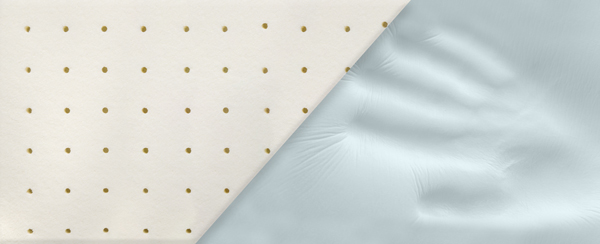Latex and memory foam are two popular types of mattress materials that offer different feels, support levels, and properties. Here’s a comparison of the key differences between latex and memory foam:
1. Material Composition
Latex Foam: Latex mattresses are made from natural or synthetic latex, which is derived from the sap of rubber trees. Natural latex is more environmentally friendly and can be either Dunlop or Talalay processed, each with slightly different properties.
Memory Foam: Memory foam, also known as viscoelastic foam, is a type of polyurethane foam that contains added chemicals to increase its viscosity and density. It was originally developed by NASA and is known for its conforming properties.
2. Feel and Comfort
Latex Foam: Latex has a responsive and buoyant feel. It provides a more immediate bounce-back compared to memory foam, making it easier to change positions.
Memory Foam: Memory foam has a slow response rate and contours to the body’s shape, providing a sensation of sinking into the mattress. It offers a “hugging” feel and conforms closely to the body.
3. Support and Pressure Relief
Latex Foam: Latex offers uniform support and provides a comfortable balance between support and pressure relief. It contours to the body without the deep sinking sensation associated with memory foam.
Memory Foam: Memory foam excels at pressure relief by conforming closely to the body’s contours. It can alleviate pressure points and promote proper spinal alignment.
4. Motion Isolation
Latex Foam: Latex mattresses generally have less motion isolation compared to memory foam mattresses. While they can absorb some motion, they may transmit more movement between sleepers.
Memory Foam: Memory foam is well-known for its excellent motion isolation properties. The material absorbs and isolates motion, which is beneficial for couples or those who share a bed.
5. Temperature Regulation
Latex Foam: Latex has natural breathability and doesn’t retain as much heat as memory foam. Latex mattresses are generally cooler and more suitable for those who tend to sleep hot.
Memory Foam: Traditional memory foam can retain body heat, leading to potential heat buildup during the night. However, advancements like gel-infused or open-cell memory foam have been developed to address this issue.
6. Durability and Longevity
Latex Foam: Latex mattresses tend to be durable and have a longer lifespan compared to many memory foam mattresses. Natural latex is particularly known for its longevity.
Memory Foam: The durability of memory foam mattresses can vary depending on the quality of the foam. Higher-density memory foam tends to last longer.
7. Allergies and Sensitivities
Latex Foam: Natural latex can trigger latex allergies in some individuals. However, most latex mattresses are hypoallergenic and resistant to dust mites and mold.
Memory Foam: Memory foam is generally hypoallergenic and resistant to common allergens.
Ultimately, the choice between latex and memory foam comes down to personal preferences, such as preferred feel, support needs, and sleeping habits. It’s advisable to test both types of mattresses if possible and consider factors like comfort, support, temperature regulation, and budget before making a decision.








